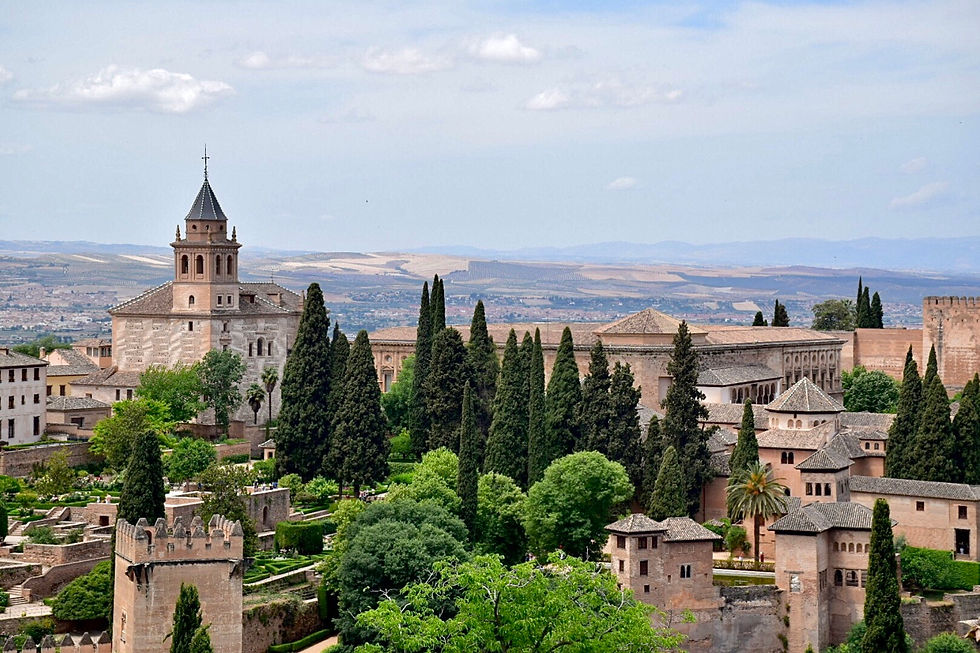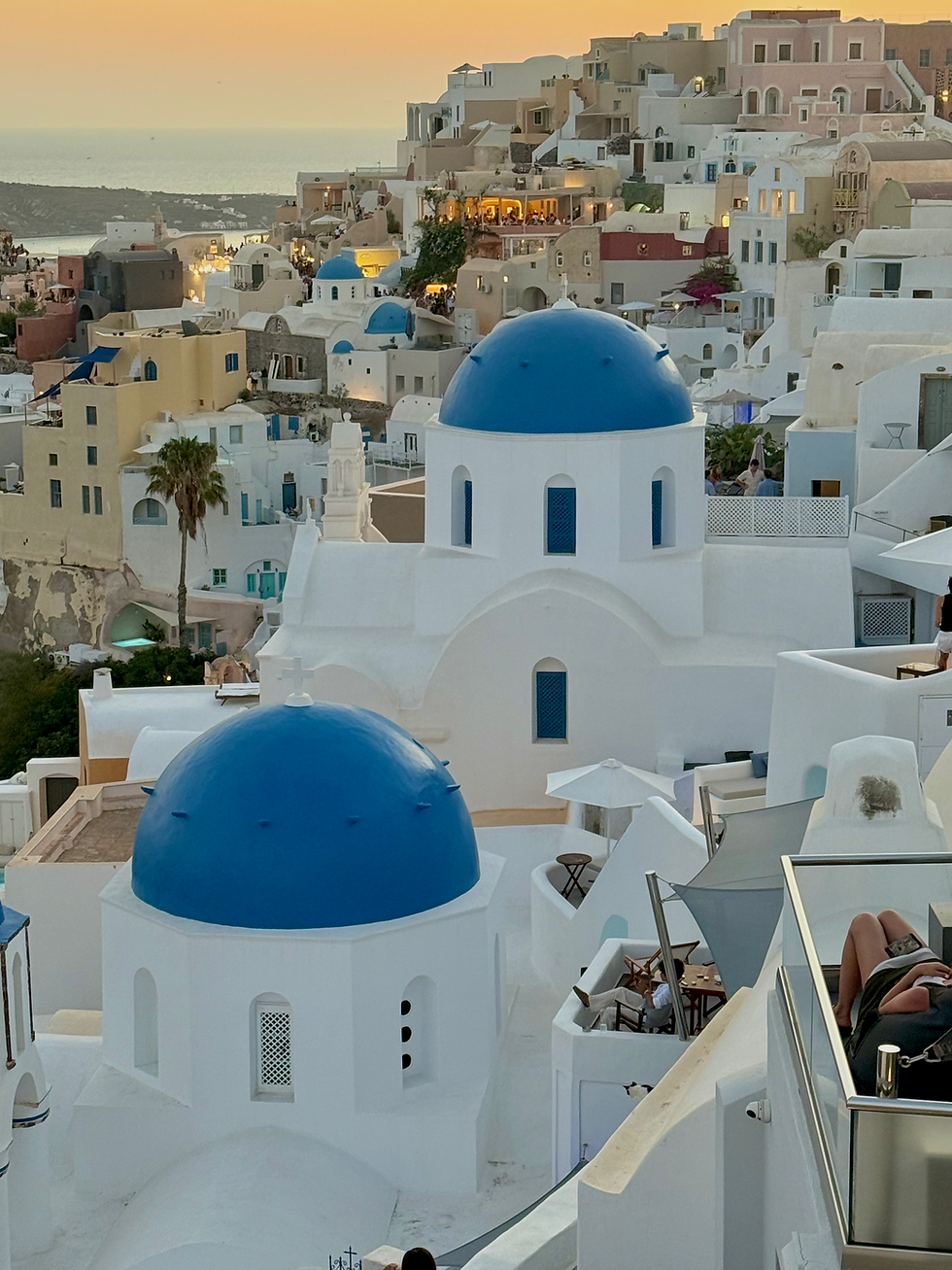Alhambra, Olives, and Math in Granada
- Amy Digges
- Jun 10, 2022
- 6 min read

Granada is almost exclusively known for the Alhambra. The city itself has a gritty flavor and most visitors take a day trip to explore the majestic gardens and architecture, walk through the Albaicín district, pass the Mirador de San Nicolás and get back on their tour bus. However, we like to get to know a city in its entirety, not just the parts that get all the attention. I like to find the back streets and get lost in alleyways. We also happened to be closing in on the last week of school for everyone. It felt a little like a grind as Liam and Quinn pushed through final exams in Math, English, Science, and Spanish. Meanwhile, as the older two studied feverishly, the younger two were contentedly playing with the toys and books in their "new" room. With a different place to explore each week, the novelty doesn't wear out quickly.

The Alhambra was the last Moorish stronghold to fall to the Catholic monarchs and signaled the end of the Reconquista by Christians. Built in the 13th century after the establishment of the Islamic Nasrid Kingdom, the Alhambra, meaning "red fort," was used as the royal residence and fortress with expansive gardens that provided food for the entire complex. Strategically placed high on a cliff, on the banks of the River Darro, and protected by a forest and mountain range, the Alhambra made it difficult to access and easy to defend.
However, in 1492 when King Ferdinand and Queen Isabella were finally handed the keys to the city of Granada, it launched Spain into its "Golden Age." In October of that same year, Columbus set sail for the West Indies, under contract by Ferdinand and Isabella. The following century would see Spain's colonization of Central and South America, all in the name of Catholicism. The flow of wealth back to Spain made the country one of the most dominant powers in the world while decimating the native population through disease. It's tough to fight back when you've contracted smallpox. It's a familiar trope.

Miriam, specializing in tours with kids, met us at the Puerta de La Justicia for a three-hour tour of the Alhambra Palace and Gardens. Like Mary Poppins with her bag of tricks, Miriam brought out books and scavenger hunt pages. The kids were sent on quests through the rooms for particular tile shapes, carvings, and Arabic phrases. Lacking classroom participation opportunities for the last few months, they were happy to raise their hand and jump in to answer questions. In Moorish architecture, fortress or not, there are few windows that face the outside walls. Instead, any windows look inward at the interior courtyard for privacy and protection. Culturally, it's also important not to flaunt your wealth from the outside (possibly for protection and privacy as well). However, on the inside, you can go to town! Which is exactly what the designers of the Alhambra did.
Intricate geometric tile designs, plaster Arabic inscriptions, optical illusion ceilings, and inlaid woodwork made by thousands of pieces for a single door panel, create some of the most awe-inspiring architecture I've ever seen. The decoration is made from the most mundane materials: tile, plaster, and wood. And yet, the construction and craftsmanship rival any cathedral dripping with gold and gems. There are 10,000 Arabic inscriptions at the Alhambra but none of them repeat more times than this one: "There is no victor but Allah." The additional designs that flood the walls and ceilings are strictly decorative without clear imagery or symbolism. In some forms of Islamic art, idolatry is prohibited (aniconism) as it's believed that God is the only creator of living forms.

Inside and outside, the sound of water is a constant companion. In Islam, water is the purifier for both body and soul. Ingenuity made it possible to carry water 6km uphill from the Darro River for their gardens, courtyards, and bathhouses. One of the more spectacular waterworks in the complex is the 12 mythological lions. Water pours from their mouths, funneling into 4 canals that represent the four rivers of paradise which are then distributed throughout the palace to cool the rooms. However, nowhere is the flow of water more evident than in the Generalife (heh-neh-ruh-lee-fe) gardens. As you take a walk outside, canals follow the walking path, cascading alongside the steps, and fountains spurt in graceful arcs. It all creates a feeling that a magician's hand is at work, especially considering this was all accomplished 8 centuries ago.
Any tour you research strongly suggests you avoid the gardens during the mid-day heat. Of course, we entered Generalife at noon. However, on this particular day, the sun was shining and we enjoyed a refreshing cool breeze. Kip had been here several times on school trips in March yet had never seen the landscape quite like this. In June, the flowers are in full bloom and everything is wildly green. Fittingly, pomegranate trees dot the landscape and are just starting to bud. When Ferdinand and Isabella claimed victory over the Moors, they named the city Granada, meaning “pomegranate,” and the symbol of the fruit is even on the Spanish flag.

A photo of a pomegranate tree is in the bottom left picture below.
I'm always fascinated by "process." In the art world, the process is far more important to me than the product. How did something come to be? How did we learn something for the first time or even make changes or improvements depending on the outcome of our attempts? So, a trip to see the process of olive oil making was right in my interest wheelhouse. We chose a small olive farm about 25 minutes outside Granada to understand this process. Along a dirt road, we pulled into the Quaryat Dillar olive grove and met José, our guide for the next 3 hours.

Standing amongst the olive grove, José stands in dirty jeans and a t-shirt, with bits of plaster in his hair, and the weathered look of too much sun on his younger-than-he-looks-face. He tells us about the process of olive oil production while holding his "bashing" stick, a long wooden pole his grandfather found from the river and made into an olive harvesting tool. José is a wealth of knowledge. He speaks from experience after being a 3rd generation olive oil farmer. What he knows doesn't come from a biology degree. It comes from trial and error, process and precision, a good eye, and a discerning palate.
He explains harvesting techniques, old and new, the right timing for a harvest, and how just one day can make an enormous difference in your product; which is why faster harvesting is crucial for quality. He demonstrates different techniques for how to prune an olive "bush" (they're actually not trees). And, he can spot leaf plague or mold like a hungry hawk looking for a meal. And that's just the beginning of the process. He took us from harvesting to pulping, filtering, mechanical extraction, and bottling.

Although you may only see "Product of Italy" in your supermarket, there is a high probability that Spain grew and processed the oils but Italy simply put them in a bottle. 70% of the world's olive oil comes from Spain. To put that in perspective, Spain produces 9.8 million tons of oil per year versus Italy's 1.8 million tons. Spain is working on amping up its bottling industry so that they get credit for the oil they produce. José then directed us to a tent in the grove with a table and chairs, a basket of bread, several types of oils, and traditional blue glass tasting cups to hide the look of the oil thereby ensuring the taster isn't swayed by the color or clarity before taking a sip. Clarifying the difference between Arbequina and Picual varieties and their uses, José led us through a thorough tasting to consider the three main characteristics of olive oil that give it its flavor. Smell: Is the aroma of grass, banana peel, or a tomato plant? Taste: Is there bitterness when you hold the oil in your mouth? Burn: When you swallow, is there a spicy feeling in the back of the throat? Paired with a loaf of crusty bread, which we had no problem devouring between sips of oil, José’s casual knowledge, that he was more than willing to impart, and clear passion came through. There were moments in these three hours that I wished I could just record it all and absorb his knowledge. If you ever come across Quaryat Dillar olive oil, know that it is delicious, made organically, responsibly, and with care. https://www.quaryatdillar.com
Between study sessions, we explored Granada and were transported back to the streets of Marrakesh. It seems like a lifetime ago that we were in Morocco but it all comes flooding back in Granada. In the Albaicín barrio, shops resemble the Moroccan souks with vendors selling tea sets, fresh dried tea, leather bags, filagreed lanterns, and rugs that hang from second story balconies. Shopkeepers stand outside trying to entice you inside, making bargains before you've even stepped over the threshold.

We missed the Moroccan mint tea that we'd grown accustomed to having for breakfast, lunch, and dinner back in Marrakesh and Fes. So, we headed to the Kasbah Tetería for té verde con menta. Did it matter that my skirt was sticking to my body in the heat? Nope. I wanted authentic hot tea.
Though we had intended to eat at the famous Restaurante de Arrayanes to celebrate the ending of exams, unfortunately, the chef came down with Covid (not serious). Fortunately, there is no shortage of dining options...nor ice cream. Unbeknownst to Liam, the dark chocolate left a perfectly tasty lip liner. We left Granada and the beautiful Alhambra to head to the Almerían provice deep in the countryside for a bit of farm life. See you in Almería!




























































































Comments